2021 Prize Recipient
Beikel Rivas (MArch'22)
The Kanter Tritsch Prize in Energy and Architectural Innovation
Beikel is a first-generation college student from La Guaira, Venezuela. He came to the United States in a search of a better future at the age of 15. As a young designer, he was always interested in art, science, and design. He started his architecture career at Miami Dade College, where he graduated with his Associate in Arts degree for architecture. He holds a Bachelor of Design in Architecture from the University of Florida.
In addition to the Kanter Tritsch Prize, Rivas Navarro was awarded the 2021 E. Lewis Dales Traveling Fellowship, First Place Schenk-Woodman Merit Award, and honorable mention in the 2020 Surface Magazine Summer School Competition.

-
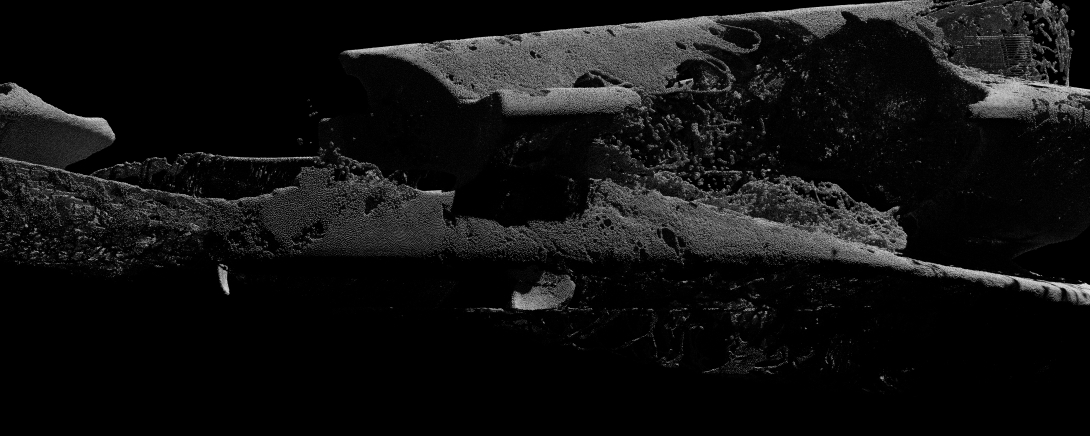 Incompleteness - This exercise aims to explore the incompleteness of nature. This is a simulation of water reacting to a particular mass. This process that emerges from studying the dynamics of water allowed us to explore a different method of form-finding.
Incompleteness - This exercise aims to explore the incompleteness of nature. This is a simulation of water reacting to a particular mass. This process that emerges from studying the dynamics of water allowed us to explore a different method of form-finding. -
 Cetacean - Physical Model Fabrication Process: as the project captures different forms from water, we begin to explore how these manifest themself tectonically as multiple puzzle pieces.
Cetacean - Physical Model Fabrication Process: as the project captures different forms from water, we begin to explore how these manifest themself tectonically as multiple puzzle pieces. -
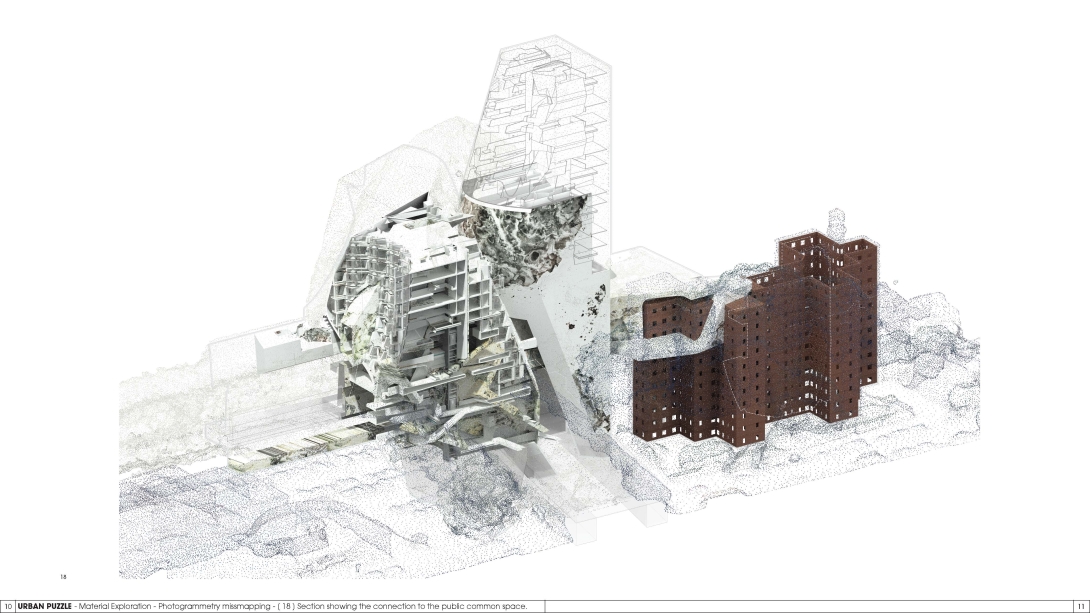 Urban Puzzle - Material Exploration: The project emerges from a series of shapes that use photogrammetry mis-mapping techniques to advance the speculative trans-position of material effects to tectonic expression.
Urban Puzzle - Material Exploration: The project emerges from a series of shapes that use photogrammetry mis-mapping techniques to advance the speculative trans-position of material effects to tectonic expression. -
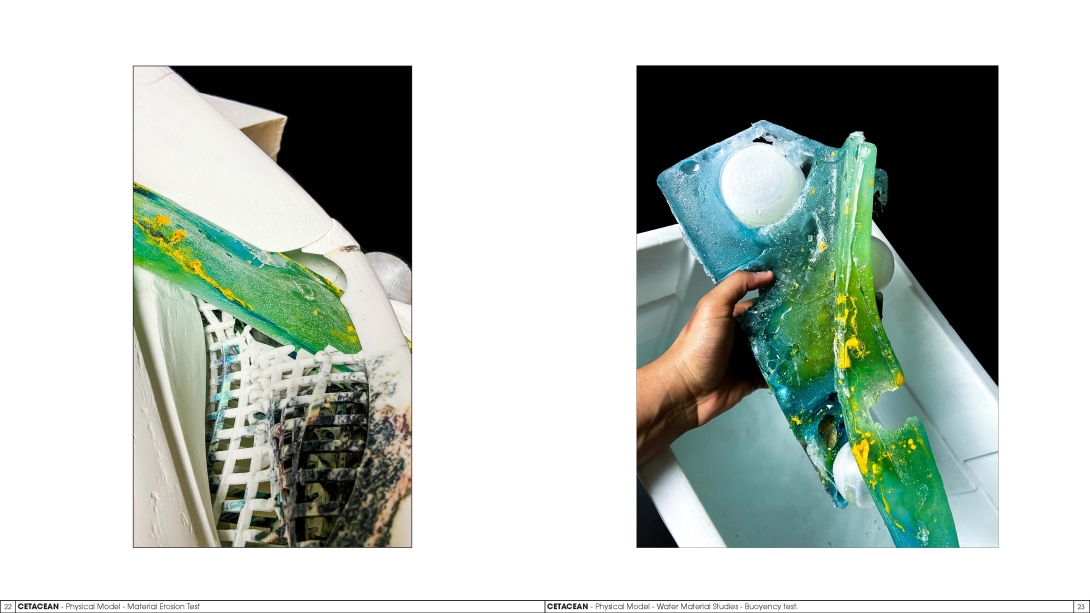 Cetacean - Material Erosion and Buoyancy Test: To approach the challenge of making an architecture that is able to float on water, we decided to study how submarines use buoyancy to suspend on water. In this particular experiment, we had to design bubbles of air that help balance the forces that are acting on the model. we had to create a buoyancy force with a magnitude that is equivalent to the the one of gravity in addition to the weight of the model.
Cetacean - Material Erosion and Buoyancy Test: To approach the challenge of making an architecture that is able to float on water, we decided to study how submarines use buoyancy to suspend on water. In this particular experiment, we had to design bubbles of air that help balance the forces that are acting on the model. we had to create a buoyancy force with a magnitude that is equivalent to the the one of gravity in addition to the weight of the model. -
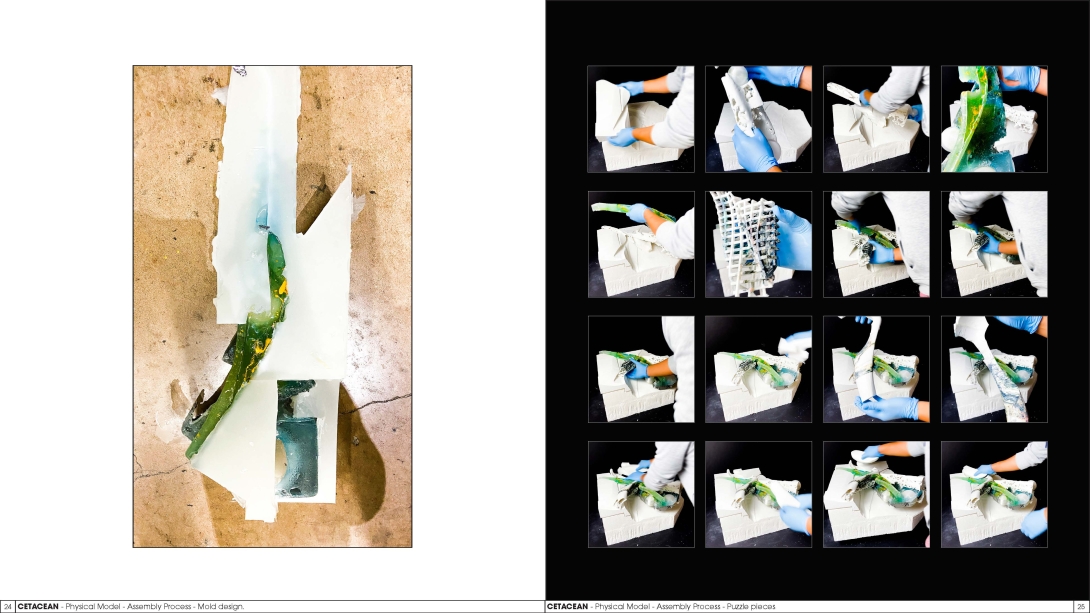 Cetacean - Physical Model Fabrication Process: as the project captures different forms from water, we begin to explore how these manifest themself tectonically as multiple puzzle pieces.
Cetacean - Physical Model Fabrication Process: as the project captures different forms from water, we begin to explore how these manifest themself tectonically as multiple puzzle pieces. -
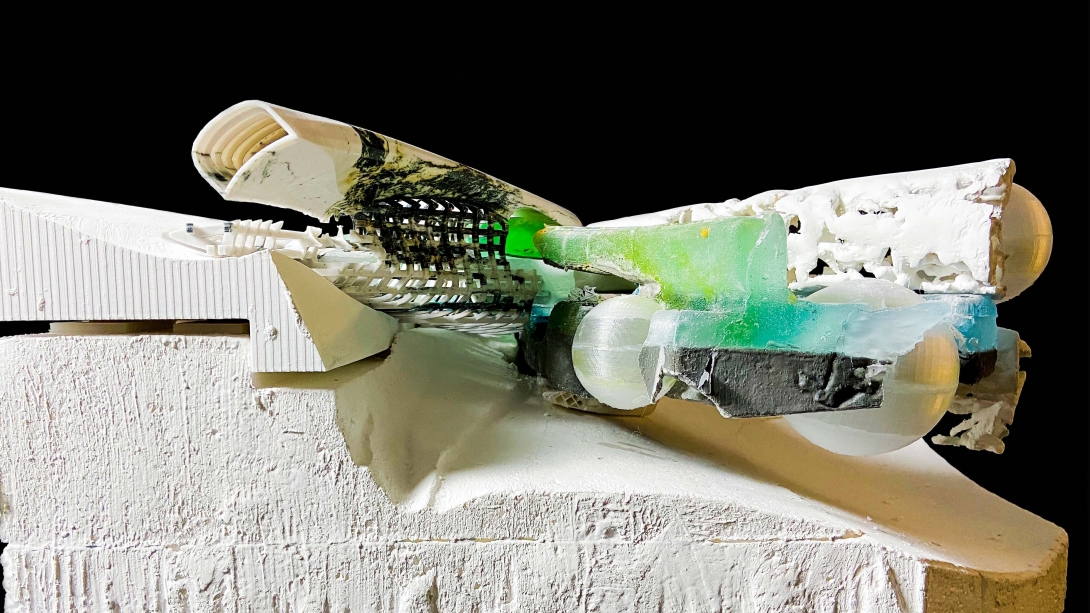 Cetacean - Physical Model Fabrication Process: as the project captures different forms from water, we begin to explore how these manifest themself tectonically as multiple puzzle pieces.
Cetacean - Physical Model Fabrication Process: as the project captures different forms from water, we begin to explore how these manifest themself tectonically as multiple puzzle pieces. -
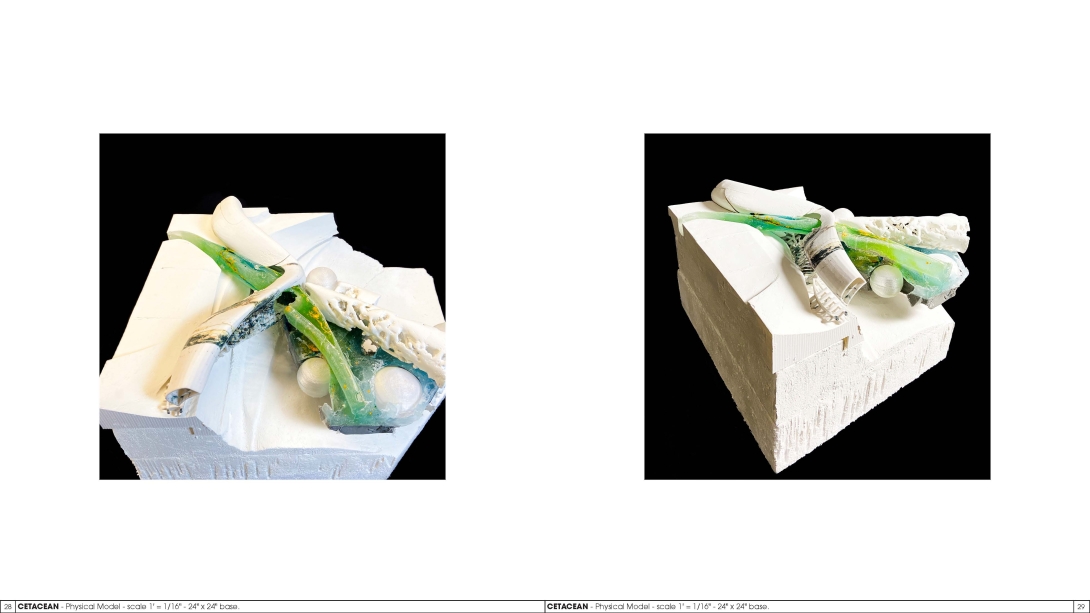 Cetacean - Physical Model Fabrication Process: as the project captures different forms from water, we begin to explore how these manifest themself tectonically as multiple puzzle pieces.
Cetacean - Physical Model Fabrication Process: as the project captures different forms from water, we begin to explore how these manifest themself tectonically as multiple puzzle pieces. -
 Art - Water-bending - Method of form finding controlled by the natural elements rather than specific aesthetics focused on responding to these forces instead of the final outcome.
Art - Water-bending - Method of form finding controlled by the natural elements rather than specific aesthetics focused on responding to these forces instead of the final outcome. -
 Digital Paradox - Physical Model: The physical characteristics of the project consist of a game of volumes that are designed to fit together as puzzle pieces to create structural stability while the digital interpretation of the site or 3D-scan begins to interfere with the physical space.
Digital Paradox - Physical Model: The physical characteristics of the project consist of a game of volumes that are designed to fit together as puzzle pieces to create structural stability while the digital interpretation of the site or 3D-scan begins to interfere with the physical space. -
 Digital Paradox - Physical Model: The physical characteristics of the project con-sist of a game of volumes that are designed to fit together as puzzle pieces to create structural stability while the digital interpretation of the site or 3D-scan begins to inter-fere with the physical space.
Digital Paradox - Physical Model: The physical characteristics of the project con-sist of a game of volumes that are designed to fit together as puzzle pieces to create structural stability while the digital interpretation of the site or 3D-scan begins to inter-fere with the physical space. -
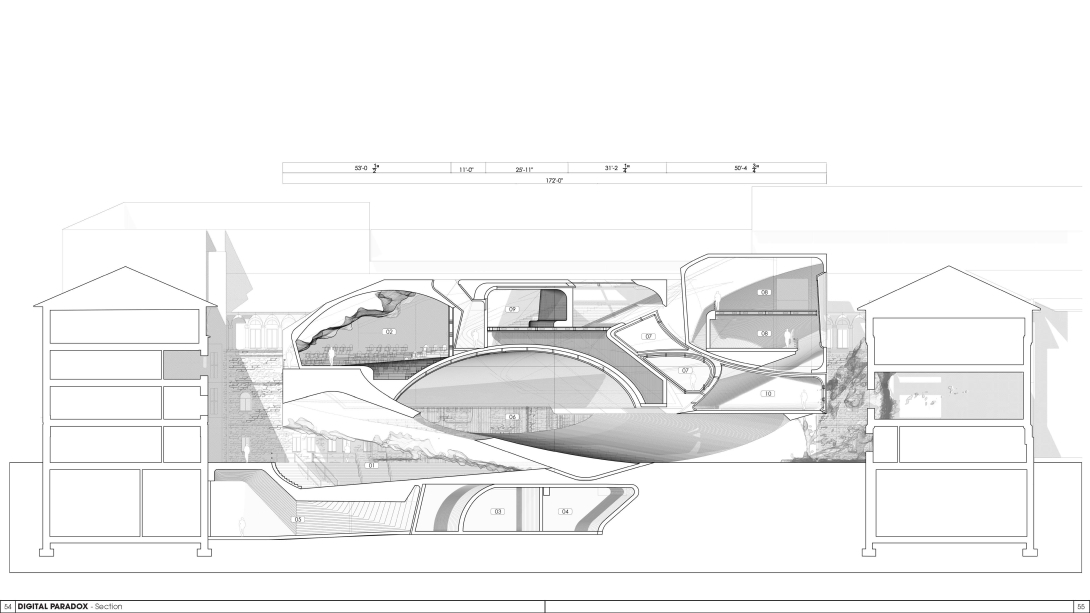 Digital Paradox - Section: As archives become more and more interested in how to better present their artifacts, spaces for digital exhibits become key for the spatial organization of the project. In addition to this, the project elevates from the ground to allow for pedestrian activity by allowing the different geometries to connect to create a balance of forces.
Digital Paradox - Section: As archives become more and more interested in how to better present their artifacts, spaces for digital exhibits become key for the spatial organization of the project. In addition to this, the project elevates from the ground to allow for pedestrian activity by allowing the different geometries to connect to create a balance of forces. -
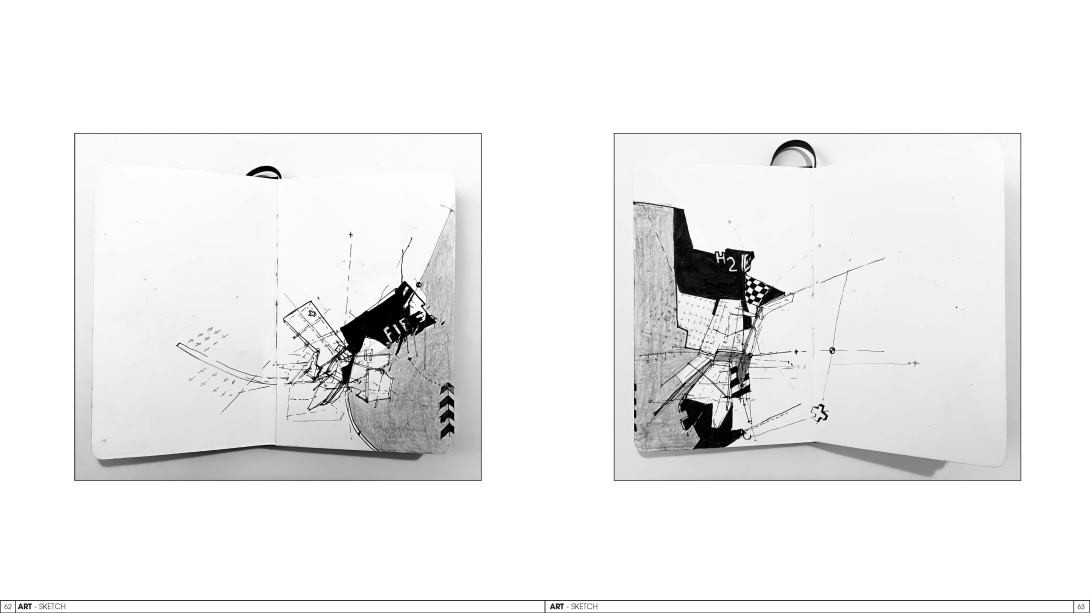 Sketch - Sketches that explore physical relationships between forms.
Sketch - Sketches that explore physical relationships between forms. -
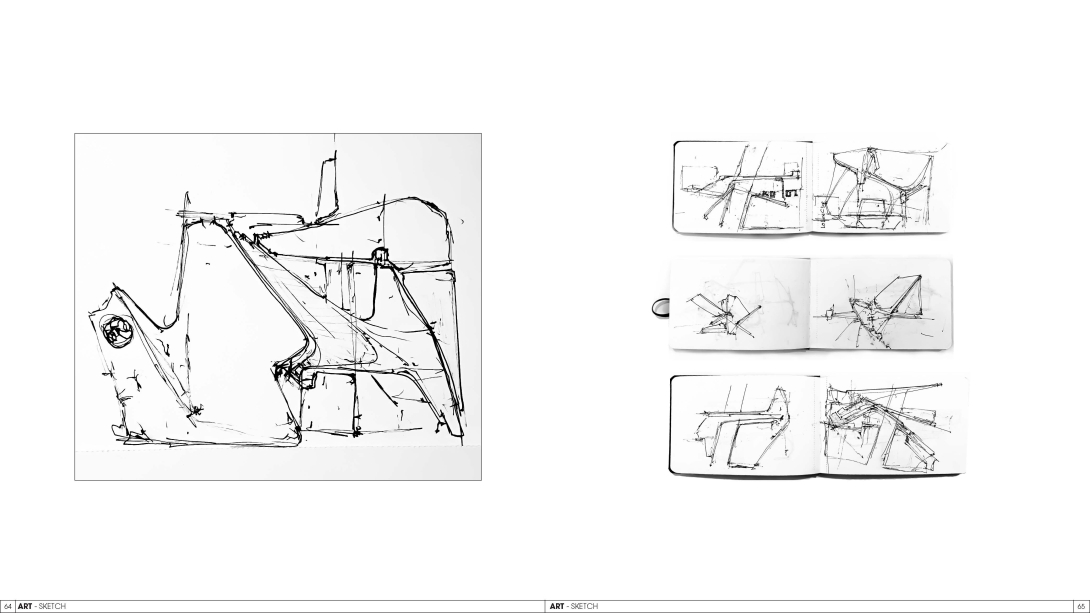 Sketch - Sketches that explore physical relationships between forms.
Sketch - Sketches that explore physical relationships between forms.


